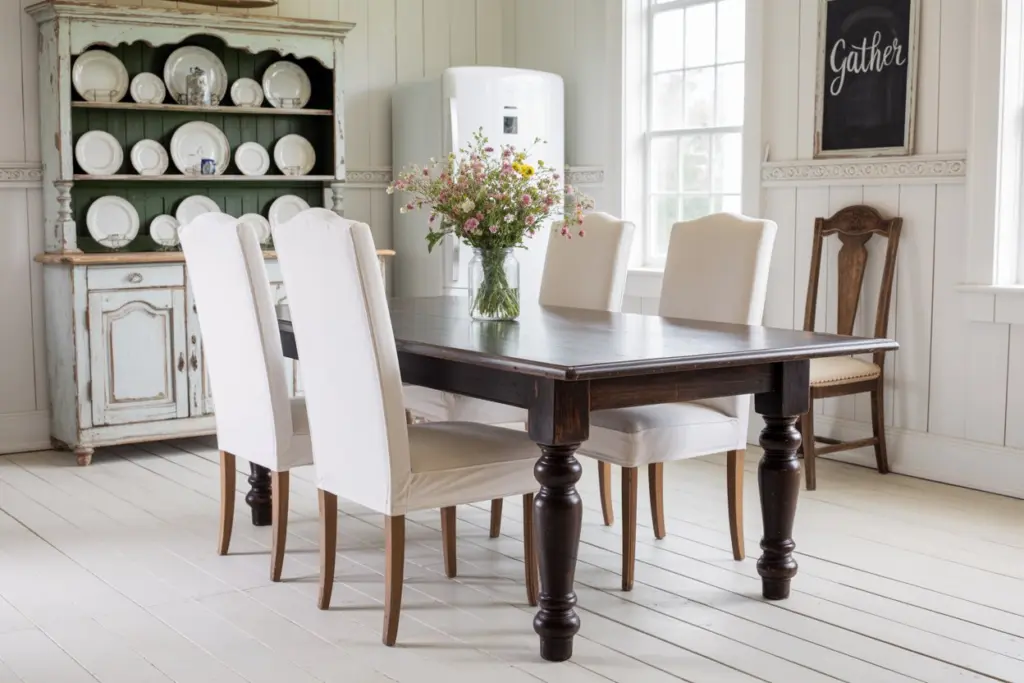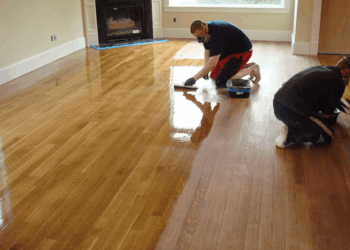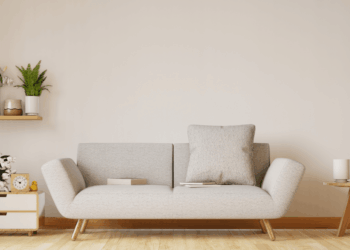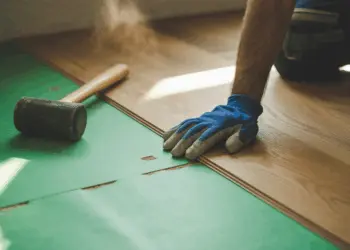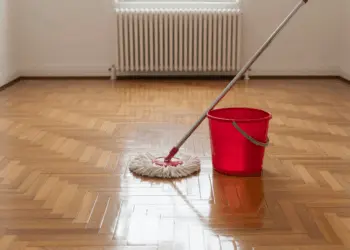Did you know? Paint isn’t confined to the walls of our interiors: it can also be used on our floors, to give them color and relief. How to choose it, for which rooms and in which shades: discover our guide to everything you need to know about floor painting!
Table of Contents
Why choose to paint a floor?
Floor painting is a quick and easy way to renovate a floor without having to change the covering. Floor painting can give new life to old-fashioned tiling in the living room, damaged parquet in the bedroom, and so on.
You can achieve this practical and inexpensive solution can with a variety of paints and shades. A wide range of paint colors and effects are available to meet all your decorating needs and radically change a room’s appearance!
Finally, you can also use it to add patterns: rhombuses and can stencil geometric designs on parquet or concrete floors!
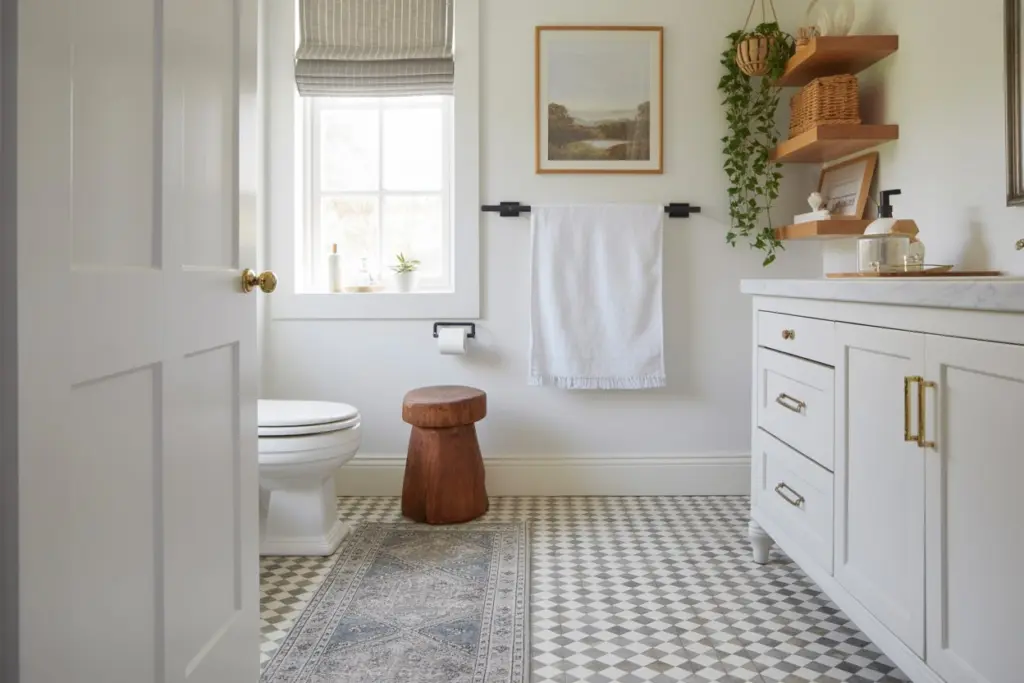
In which rooms should I apply floor painting?
Floor painting is equally suitable for living rooms, bedrooms, kitchens and offices. For bathrooms, however, we should avoid paint where the floor is exposed to splashes of water and is regularly washed, as it can become damaged over time, in favor of tiles. There are also floor paints for garages and outdoor spaces (terraces, etc.).
Floor painting can also breathe new life into a staircase! As the space is small, you can dare to use original color combinations: yellow, pink, turquoise blue. Another possibility: paint every other step white, the other black, create a multicolored or patterned staircase, and so on.
You can also play with the paint on the wall, matching it to the wallpaper or creating a gradient. The staircase can be made of wood, concrete or wrought iron. In the latter case, a double coat is required to thoroughly impregnate the surface.
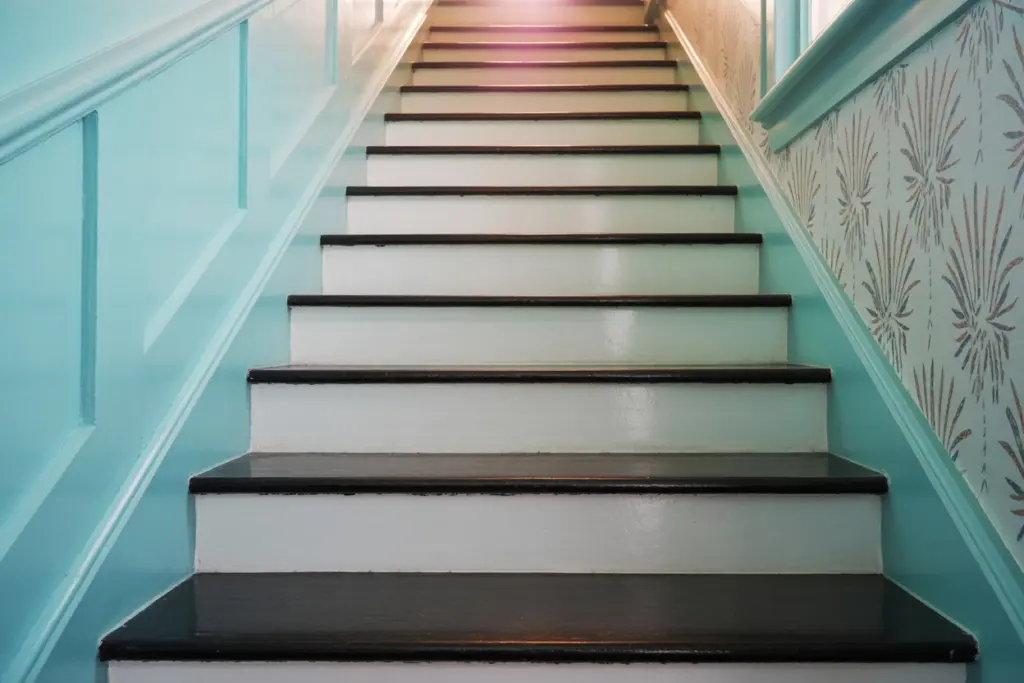
What floor painting color should I choose?
Choosing the color of your floor paint depends on a number of criteria. Firstly, the room’s decor and the color of the walls: remember to match the shades. Secondly, as a general rule, light colors give an impression of grandeur and space. They are also dirtier.
Conversely, darker tones can make a room appear smaller. They do, however, give character to a decor, and add a modern or industrial touch. A black or midnight-blue floor, for example, can enhance a modern living room or kitchen.
In the kitchen or living room, repainting a parquet floor in white, light turquoise or water green will give the room a fresh feel. The floor will reflect the light, bringing clarity and luminosity.
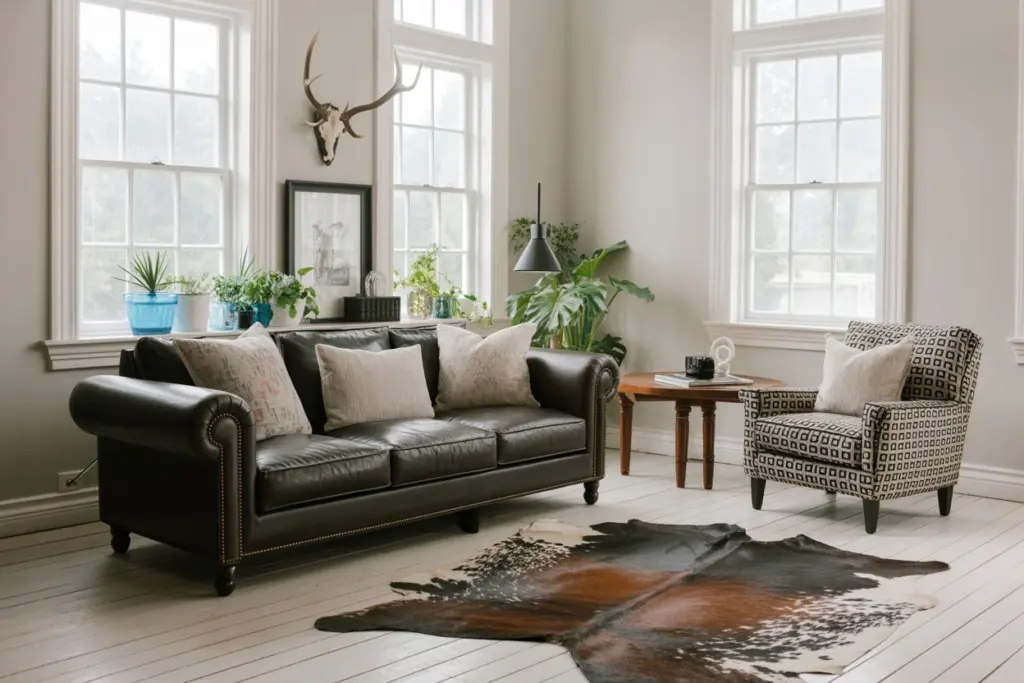
A more original tone (red, pink, even black) will be perfect to break up a decor deemed a little old-fashioned (antique wooden furniture, tiles with outdated patterns) and match a more modern kitchen. The same goes for the living room or dining room.
With a repainted floor of this type, try to combine only one or two other shades, such as natural wood, so as not to overload the room with too many colors.
For a landing or corridor, you can also dare to use more original floor paint colors, just as you would for a toilet or staircase. Finally, in an entrance hall, avoid light colors, which are easily soiled by footprints. An entrance painted dark grey or blue will go perfectly with a wooden or black iron staircase.
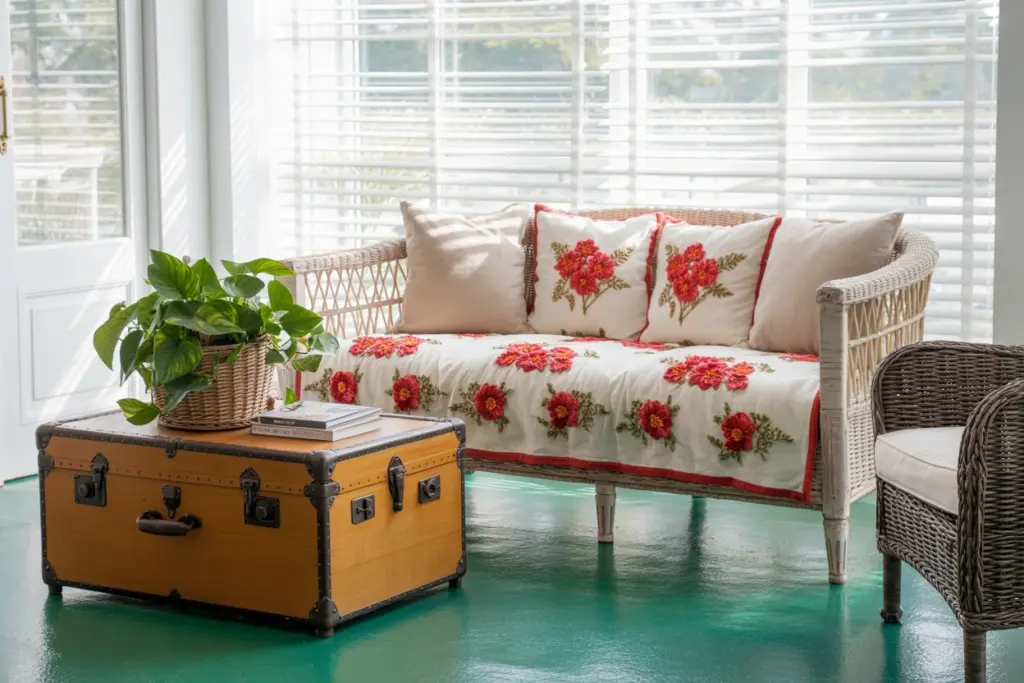
What you need to know before taking the plunge
Which floor painting should I choose?
It’s impossible to paint floor coverings with conventional acrylic paint. To be durable and resistant, your floor paint must combine a number of qualities:
- Good wear resistance: paint must be designed to withstand foot traffic, or else be protected by a varnish suitable for floors;
- Suitable characteristics: it’s essential to choose a paint that’s suited to the room you’re painting (kitchen, bathroom, etc.), but also to the floor covering (tiles, concrete, parquet, etc.);
- A matching color: from an aesthetic point of view, you’ll also need to choose a paint whose color matches your walls, ceilings and interior decorations.
It’s important to understand that not all floor coverings can be painted. Before considering floor paint as a miracle solution, check that it is suitable for your floor.
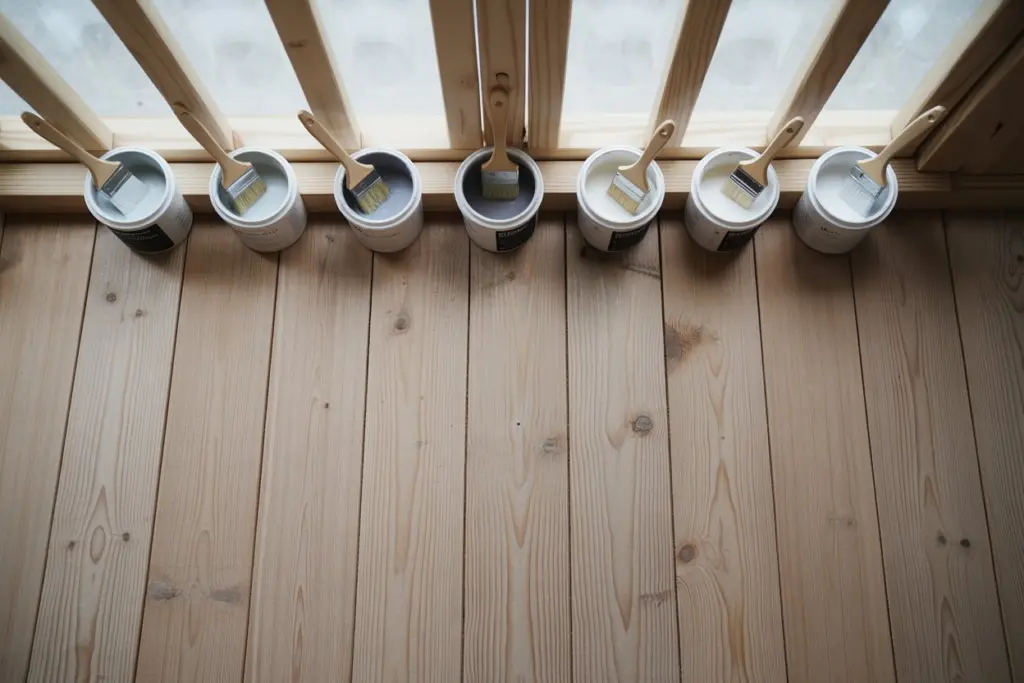
Note: to improve the resistance of your floor paint, you can cover it with a protective coating or varnish. But don’t neglect your choice of floor paint.
Types of floor paint
You have several options:
- Floor paint, which is more resistant and used on tiles, concrete and wood;
- Acrylic paint, although you will need to apply a sealant at the end to protect your floor;
- Tile paint for your tiled floor. Note that you’ll need to apply a primer underlayment to help the paint adhere better to the tiles.
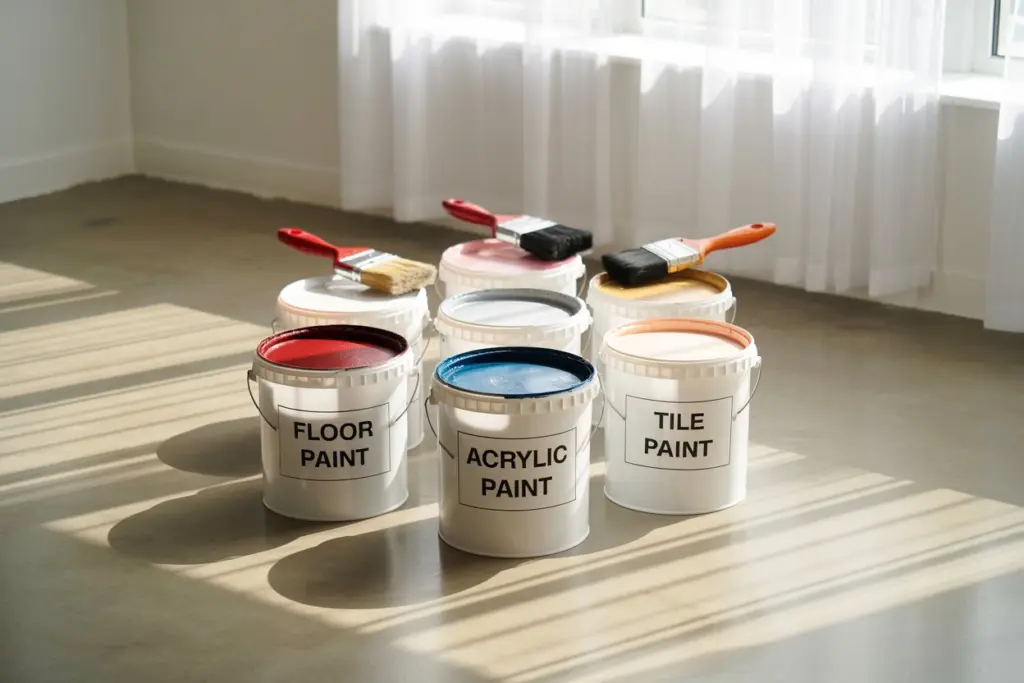
How long does it take?
Installation time obviously depends on the surface to be painted, but drying times are as follows:
- Tiled floor: a minimum of 24 hours for the undercoat, and a further 24 hours for each of the two coats
- Concrete or cement floor: a few hours for the first coat, then 24 hours for the second coat
- Parquet: a dozen hours for each of the two coats
If you have used special floor paint, we recommend that you leave the floor to rest for 4 to 5 days.
What mistakes should I avoid in floor painting?
To transform your interior economically, floor paint is the ideal way. To make sure you don’t make any mistakes, take advantage of our advice.
- Washing solid oak parquet to clean it: If you plan to paint a parquet floor, be careful not to wash it. Moisture will damage the floor and cause it to swell.
- Forgetting to protect baseboards: When using floor paint, make sure you prepare it properly. Use masking tape while you’re working, to avoid damaging the baseboards.
- Not using a special floor paint: To paint your floor, you can choose from different paints. Special floor paints are resistant and used on tiles, concrete and wood. Acrylic or multisport paint can be chosen, but only if you use a sealant at the end, to protect the floor.Finally, “special tile” or parquet paint is ideal, but always remember to use an undercoat for better adhesion.
- Painting an unprepared floor: Before applying paint, it’s essential to vacuum and wash your floor, and sand it if it’s a parquet or tiled floor. Then coat the floor with a preparatory layer to act as a fixative!
- Do not fill cracks: Fill cracks in concrete floors with a chisel. Remove cracks with a wire brush, vacuum, and then cover with mortar.
- Don’t prepare a concrete floor: After thorough cleaning, cover the floor with a product called “floor preparation”, a bottle that cleans and neutralizes new cement. On a too-smooth surface, it allows a slight porosity.
- Not respecting the drying time: Paint application time depends on the nature of the floor. A tiled floor will require a minimum of 24 hours for the undercoat and 24 hours for each of the two coats.For a concrete or cement floor, a few hours are enough for the first coat, but the second requires 24 hours. For parquet, only a dozen hours are needed between coats. It is also advisable to let the floor rest for 4 to 5 days.
- Painting the wrong way round: Start by painting around the edges with a brush. Go from the back of the room to the exit and pull the roller in the direction of the blades.
- For concrete and tiled floors: On concrete, criss-cross the passes of the roller so that the paint is uniform. Always pull the paint in the same direction. Do the same on tiled floors.
- Don’t paint a floor in a high-traffic room: If you’re painting a tiled floor, avoid doing so in a room that gets a lot of traffic. Choose a bathroom, toilet, office or master bedroom. This way, the paint will last at least 5 years and won’t wear out too quickly.
- Choosing the right paint for the right floor: When painting a floor, you can’t use just any paint. For example, on porous tiles, the paint will adhere well. But if it’s shiny and smooth, it won’t hold. You’ll need to use a sander to abrade and create adhesion.
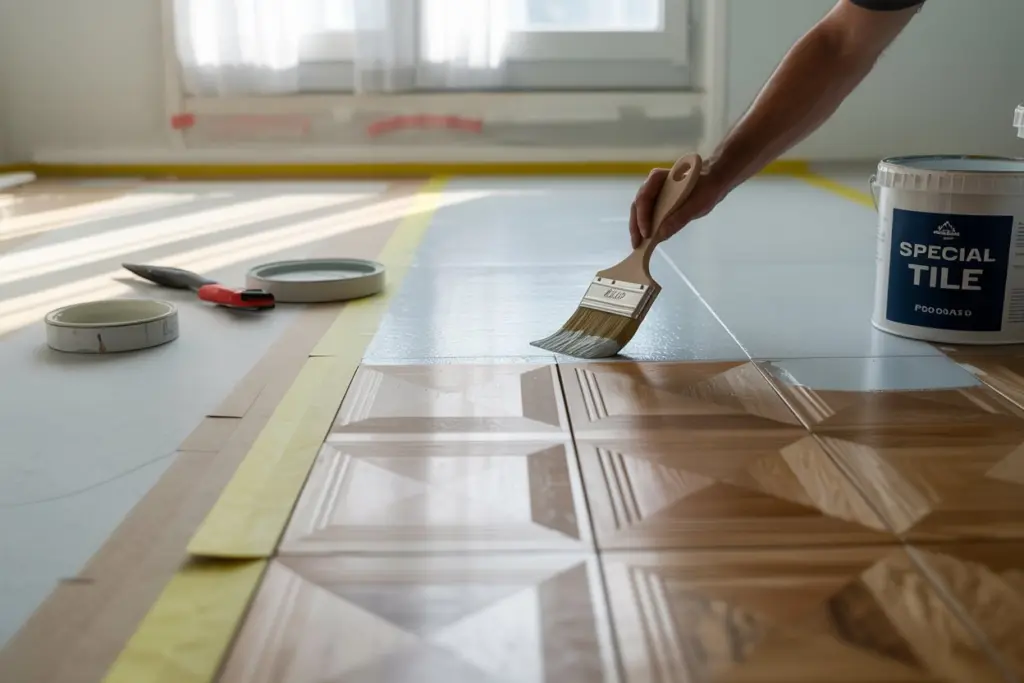
Successful floor painting
The quality of a floor paint job will depend first and foremost on the paint chosen, and the quality of the application. If you’re planning to paint a floor, it’s important to be well informed about such interior work:
Which floor can be painted?
First of all, bear in mind that not all floor coverings can be painted. Generally speaking, resilient or PVC floors cannot be painted, unlike tiled or concrete floors. We can also paint parquet, but most homeowners prefer to varnish or wax their floors.
In all cases, it’s essential to choose the right floor paint for your floor covering:
- Concrete floor paint is ideal if you want to paint a garage floor or any other concrete floor.
- To paint a parquet floor, use parquet varnish, vitrifier or special indoor floor paint.
- Tiled floors are best painted with epoxy paint. Remember to apply a special undercoat to porous tiles, which may otherwise absorb the paint.
Your choice of paint will have a definite impact on the success of your painting project. So always, check that the paint you’re interested in is designed for your type of floor. All you have to do is reading the instructions and conditions of use carefully, ideally BEFORE you buy a floor paint!

Steps to floor painting
If you decide to paint a floor yourself, note that painting a floor is often more delicate than painting a wall. You need to make sure that the paint you choose will adhere properly, and take every precaution to paint in the best possible conditions.
Painting a concrete or cement floor
Prepare the floor
- Make sure concrete or cement is completely dry
- Brush the floor to remove all traces of dust or particles
Apply paint
- Protect baseboards with masking tape
- Mix paint
- Paint the corners with a chisel brush
- Apply paint with a roller, criss-crossing to avoid streaks
- Allow surface to dry for a few hours
- Apply a second coat
- Allow to dry for a further 24 hours
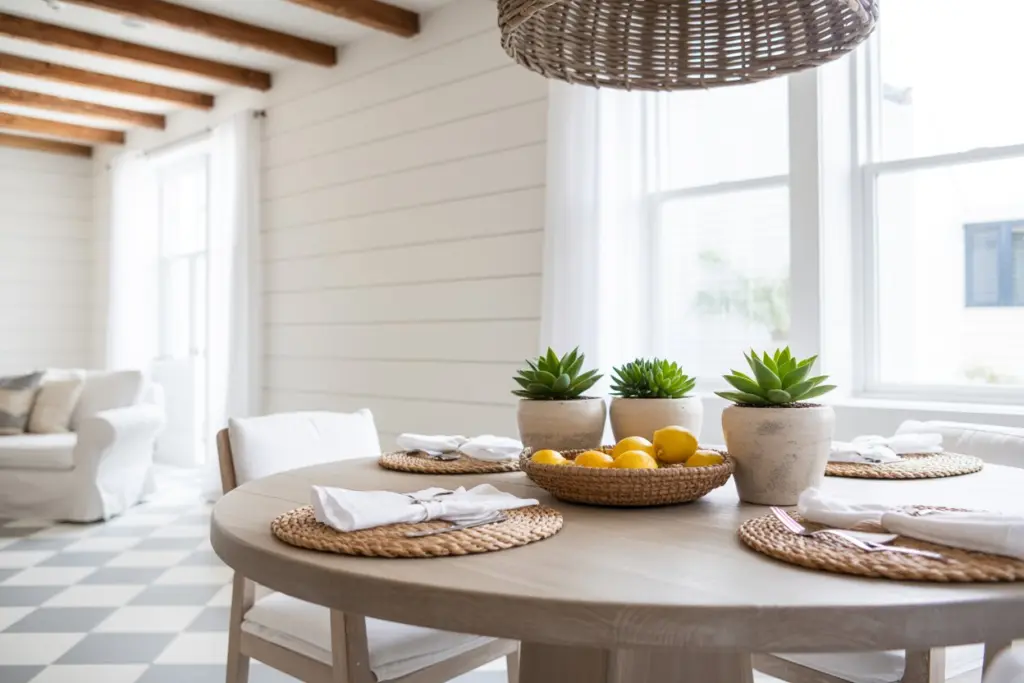
Tiled floor painting
Preparing the floor
- First, degrease the tiled floor, whether inside or outside the house.
- Then dry the floor
Applying the undercoat
Painting a tiled floor requires the application of a primer (also known as an adhesion primer), a special undercoat that helps the paint adhere better to the tiles.
- Protect baseboards with masking tape
- Mix the primer
- First paint the joints and edges with a brush (unless you want the joints to stand out).
- Then apply the undercoat with a roller, criss-crossing to avoid streaks.
- Allow to dry for at least 24 hours
Applying the paint
- Apply a first coat following the same instructions as for the undercoat
- Allow to dry for 24 hours
- Lightly sand floor to remove roughness
- Dust to remove all traces of particles
- Apply a second coat
- Allow to dry for 24 hours
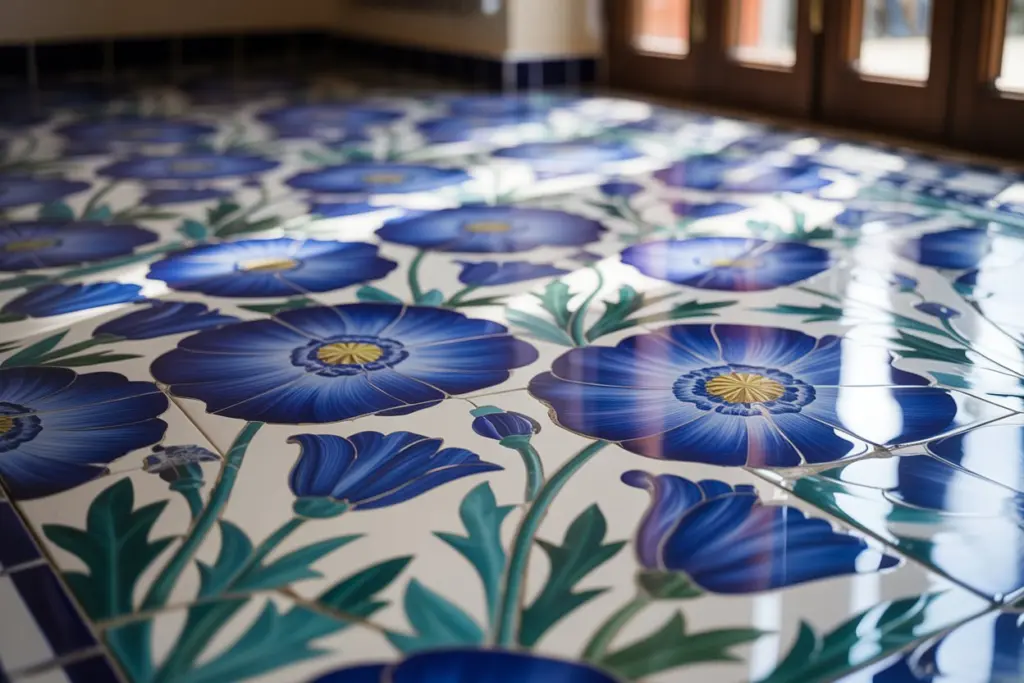
Wooden floor painting
Prepare the floor
- Fill any holes and cracks with wood filler
- Sand the floor if it has already been varnished, waxed or painted
- Remove dust and all traces of particles
Apply paint
- Protect baseboards with masking tape
- Mix paint
- First paint the edges using a brush with a dauber
- Then apply the paint with a roller, criss-crossing to avoid streaks
- Allow to dry for at least 12 hours
- Sand the floor with fine-grain sandpaper
- Dust to remove all traces of particles
- Apply a second coat
- Allow to dry for a further 12 hours
